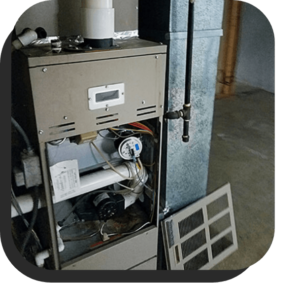One of the most important parts of your house is your furnace. It keeps your home warm, which is essential to your health and comfort. In addition, if it is not working as efficiently as it should, you may find yourself having to pay more for your heating bills. Therefore, it is a good idea to learn how to do furnace repairs. The first step is to understand what your furnace needs to run at optimal performance. You should also know the symptoms of a malfunctioning furnace. This will allow you to identify which component needs to be replaced or repaired.

If you are experiencing problems with your furnace, there are many reasons why you might need to replace your blower motor. Some common causes of failure include overheating, excessive moisture, and dust buildup. You will need to consult Furnace Repair to make sure you are getting the best service possible for your home.
The first step is to inspect your blower and blower motor. If you see that the motor is dirty, you may have a capacitor or a drive belt that is faulty. You will also need to check the wire connections. If you have no idea how to perform these repairs, you should get help from an HVAC technician.
A furnace’s blower motor is a complex piece of equipment that may require repair or replacement. If you need a professional, you can contact ARS/Rescue Rooter, a national HVAC company. They will have the knowledge to assess your needs and suggest an upgrade or a new furnace for you.
If you are experiencing a blower motor issue, you should turn off the furnace and have the blower checked. This will ensure that the system is working properly. It is also important to know that a dirty blower can affect your energy bills. It is recommended that you clean your furnace’s air filter at least once a month during the heating season.
Heat exchangers are important to your furnace, and if you have a cracked heat exchanger, you should call a technician right away. Leaving a broken heat exchanger unchecked can lead to dangerous fumes entering your home and even death.
A cracked heat exchanger can be the first warning sign that something is wrong with your furnace. During the heating and cooling cycle, the metal of the heat exchanger expands and contracts. It is the expansion and contraction that cause the heat exchanger to break.
If you have an older furnace, the risk of cracking is higher. Depending on the model, a cracked heat exchanger may result in a dangerous condition where gas leaks, flue gases, or both enter your living space.
If you have a faulty heat exchanger, you should consider replacing it. This will help you stay safe and protect your family. It will also save you money in the long run. The average heat exchanger will last about 10-20 years. If you are nearing the end of its lifespan, it may be time for a replacement.
During a normal furnace’s heating and cooling cycle, the exchanger carries the heated air through the system’s ductwork to the living spaces. When the heat exchanger breaks, it will allow combustion byproducts to escape and can result in unsafe levels of carbon monoxide in your home.
When a draft inducer motor fails, it will not allow heated air to escape from the furnace. This can cause several problems for homeowners. Fortunately, replacing a motor is simple and cost-effective.
First, determine whether your home warranty covers the replacement. Most home warranties do. If not, you may need to pay for the replacement out of pocket.
The cost of a draft inducer motor replacement depends on a few factors, including labor rates, service fees, and the brand of the unit. A unit with a higher voltage may cost more to replace. You should also consider the age of the unit. A newer model with an ECM motor may cost more than a model with a non-ECM motor.
The cost of a replacement will also depend on whether you choose to do the job yourself or hire a professional. The average cost of a new inducer motor assembly is about $70 to $300, but in rare cases could cost more.
If you do the installation yourself, you can get your unit up and running in just a few minutes. However, if you have no electrical skills, you’ll need to hire a professional to help you. This will cost around $140 to $210 per hour, depending on your location.